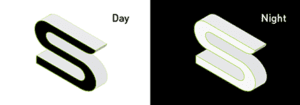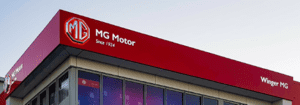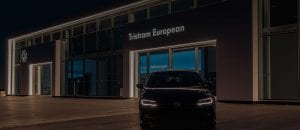A focus on automotive brand reputation.
There are a different strategies that signwriters and marketers use together to help combat various negative brand perceptions that prevent sales from happening. While the manufacturer is responsible for rectifying the causes of those negative perceptions, the marketers and signwriters are responsible for sending different and positive messages along with the solution.
Here are some of the ways signage has achieved this:
-
How Signage Can Help Brands Bounce Back From Scandal:
One of the most interesting public scandals in the car manufacturing industry has to be the VW emission scandal dubbed “The Diesel Dupe”. According to research carried out by the BBC News* on the topic, the VW models in question had the ability to “cheat” testing using a “defeat” computer system that can detect the objective performance standard allowing it to adjust the CO2 emissions to achieve better test results.
After a blow like this to an important car brand, it is difficult to bounce back with media sensationalizing the issue for better ratings. VW in this instance used a brand refresh to help refocus the brand towards their more eco-friendly models like the ID3*.v.
As signwriters, we need to understand how the new brand needs to be showcased and deliver signage that meets the branding objectives outlined by the brand strategists in charge of building the new perception. This is important because this new branding strategy has been meticulously strategized to fix the tarnished reputation of the brand so that the brand can sell more effectively than before.


One signage element used in this case was a cool white illuminated 3D text with perfect proportions in relation to the architecture supporting it. Some elements that help to support the new values of the brand are as detailed as a chrome hairline accenting the shape of the new VW emblem. VW also used some of the latest in signage technology, namely black vinyl that allows light translucently as well as chrome finishes that also allow light through, essentially transforming the signage at night time.
By utilising these latest technologies in signage and pushing the boundaries of what is possible with illumination, VW managed to solidify the new brand and its values of sustainability and technology so that they can begin a new chapter that will sell more cars than ever before.


-
Balancing The Perceived Quality of The Brand Using Signage
Some car brands are notorious for breaking down and being generally bad quality. From the signage end of the marketing process, we have noticed after over our 34 years in business that brands either try to compensate for this or combat it.
For example, Kia has worked hard over the years to not be perceived as “cheap” and have successfully maintained the brand position of “affordable” by adding more safety features, more luxurious interiors and generally better-looking cars. Kia has a rich brand history* and it is a go-to for an affordable reliable car. Kia’s accompanying building signage and internal signage has worked hard to do the same with minimal bright red pylon signs and sturdy and simple illuminated fascia signs that are strategically composed on the side of the building to express brand values of affordability and reliability without compromising on style and comfort.
By contrast, Fiat tends to manage its perceived lack of quality by compensating with personality. It is difficult to argue that the Fiat 500* doesn’t have personality and it is our objective to take that brand positioning and magnify it through the signage fit-out of the dealership. We do this with strategically coloured illumination and vibrant digitally printed signage like lightboxes that reflect these values of the brand.
-
Helping the Brand Appeal to Different Demographics
We have noticed a lot of branding efforts by car manufacturers to appeal to the millennial generation. Upon investigation, we found that this has been an ongoing race between brands as millennials become bigger income earners and demand grows amongst that demographic.
According to Forbes research*, millennials are a complicated case to crack in terms of car sales. While they represent most of the car sales of the future, they also carry a very different set of values and priorities that car brands are working hard to crack.
Some of the signage trends used to appeal to these demographics are the use of illuminated signage that closely reflects the same kind of light generated by our smartphones. This type of light is identified by its smoothness and how evenly it is illuminated. Signage companies are required to stick to strict LED specifications to achieve this and it takes years of experience to achieve it well.
Some of these specifications include a specific LM rating (how bright the LED light is) with a specific temperature creating either a warm and antique ambience with yellow tints or a stark and cool ambience with blue tints. At first glance, both colours are just standard white but these details and specification build the experience of the brand and have implications on how well the brand is received by new audiences.
We used stark white light together with a slightly warmer light for MG’s signage to help keep the brand modern and appealing to younger demographics while still staying true to the history of the MG brand with a slightly warmer tint to some of the halo illuminated elements.


-
Bring an Out-Dated Brand Back to Life
Cars have been around for centuries and some brands are rich with history and have a proud legacy to hold up. Brand strategists work to bring some of these proud brands into the present and make them relevant again without neglecting the heritage of the brand, and signwriters work to craft those brands into a real space in a way that supports this.
One of the ways we do this is with history walls and vintage style signage elements that can be used within the dealership decor. We can honour the old versions of the brand logo by displaying it as an interesting showroom piece or printing a window graphic of a timeline showing the progression of the logo design throughout the years. For example, the way BMW* has adapted its logo shows a progressive improvement instead of forgetting the old and moving on to the new thing.
-
How Signage Increases Awareness:
Here is where internal and external branded signage really “shines” (pun intended). Having the brand illuminated and displayed publicly facing the traffic with a pylon sign is a sure-fire way to build awareness. But why is signage crucial to brand awareness?
A lot of things exist in the online space. A lot of ideas and brands pop into our minds through our phones and computer screens on an hourly basis and unfortunately, most of them pop right out of our awareness again. Signage helps to build awareness as it brings the brand out of the digital space and into the real world. The brand can be seen, touched and engaged with which builds awareness and memorability within the consumer’s mind.
This is also powerful in terms of building online awareness as imagery is seen online of the brand existing in real life (a professionally taken image of the dealership with its branded signage) helps to solidify the fact that this idea marketed to us on a screen actually exists in the real world too.
Take a look at these stunning photos of the signage we installed at Tristram VW. The signage and the product work together so well to create this fantastic image that is sure to build awareness and get more buyers through the doors.


References:
- BBC News – Volkswagen – The Scandal Explained
- Autowise – Kia Company History
- Fiat 500 – Fiat
- Forbes – Millennials Don’t Dislike Cars New Study Says
- BMW – Logo Progression
Take a look at our automotive signage solutions here




